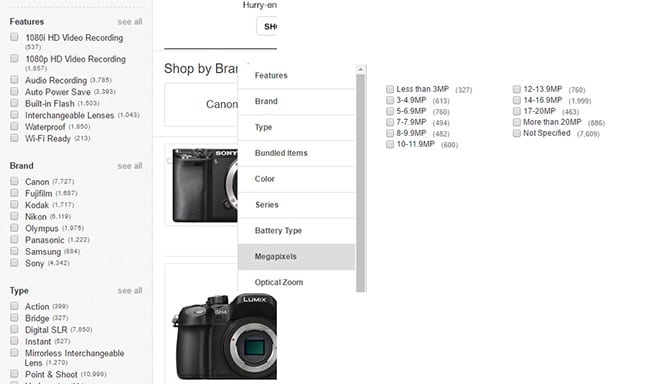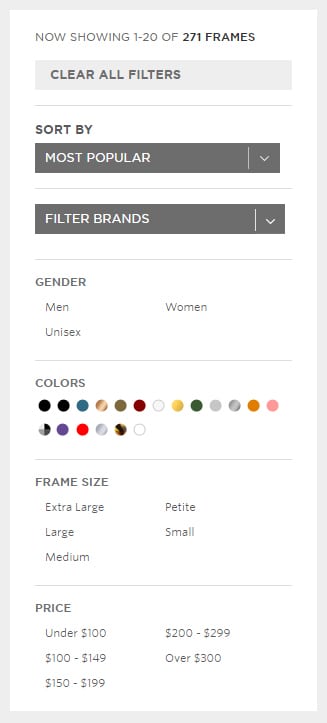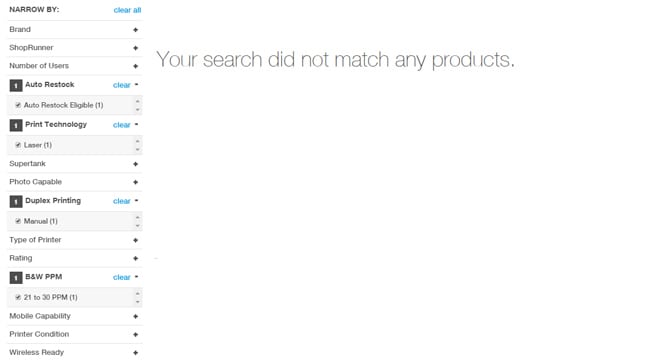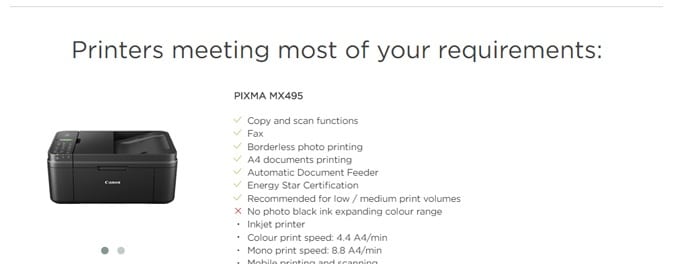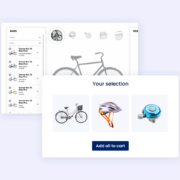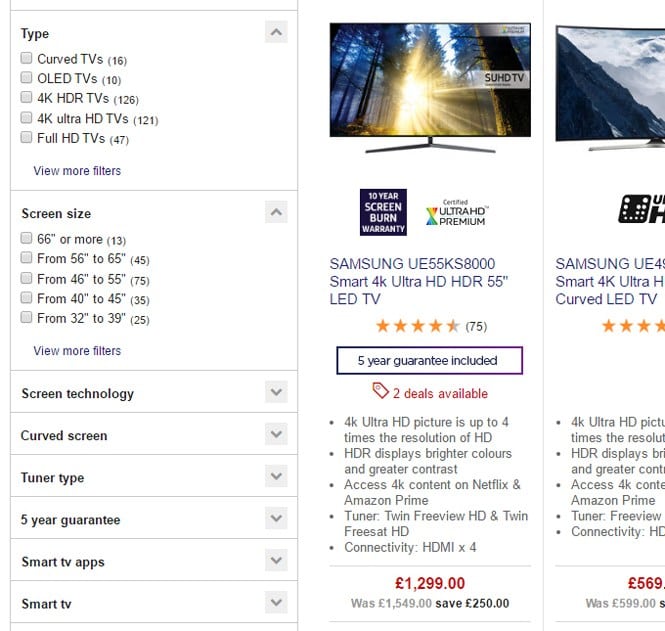In years past, Faceted Search has been the most effective way of narrowing down huge product listings to a select few results based on specific qualities. However, while they can be quite useful, there are some things these facets just can’t seem to get right.
What Are Facets and What’s Their Story?
Faceted search as we know it today, has its roots in the Colon Classification (1933), which was conceived and developed by Indian mathematician and librarian S. R. Ranganathan. Ranganathan felt that a more advanced classification system was needed to accommodate the rapid expansion of multi-dimensional information.
His vision for this new classification was that it should be as modular and easy to use as the Meccano toy construction game he had seen on a trip to London. Different pieces could be combined freely to construct a different toy each time – according to the kid’s imagination. It led Ranganathan to develop the groundbreaking Colon Classification which later became the basis for faceted classification.

Facets allow customers to choose a defined set of attributes by which to narrow down a list of products to display only those that match the user’s desired product specification.
It works well in certain cases. However, customer behavior and search patterns are changing. The ever-growing amount of information and the sheer number of available products call for new approaches. Loudly. Consumers are tired of filtering a large volume of information and marketers are challenged with providing a simpler and easier path to purchase. The Colon Classification paradigm was revolutionary in 1933, but is it still effective today?
Studies show that consumers have a growing intolerance for complexity, which is why user interfaces must evolve to keep up with consumer needs.
As it turns out, only about 40% of online shops use facets, which is a surprisingly low number considering how useful they can be. This primarily has to do with the difficulties in effectively implementing these facets.
The Baymard Institute conducted a comprehensive study encompassing 50 major e-commerce websites in the US to analyze their usability across 93 guidelines. They found that only a measly 16% of websites offer a good filtering experience. About half of these websites ranked as ‘passable’ by those surveyed, while the remainder (34%) was deemed ‘very bad’.
A major reason for this is that developing a good faceted search system on a website is quite a tricky undertaking. Not all companies manage to get it right: 32% of websites selling compatible products (like phone covers) don’t use compatibility filters (like size), 42% don’t have category-specific filters, and 20% don’t have thematic filters.
While faceted search is one of the most significant search innovations of our time, it is clear that a better, more effective solution is needed today.
That solution must be aimed at helping customers find the products that best suit their needs, faster.
Guided Selling is faceted search’s intuitive, personal and user-oriented counterpart, an interactive questionnaire-based product advisor that asks targeted questions about the customer’s needs, wants, and preferences as opposed to technical, impersonal product attributes.
Let’s take a look at how Guided Selling stacks up against faceted search in some of the most crucial areas.
1. Usage and Accessibility
Attribute-based filtering vs Needs-based filtering
How Faceted Search Does It
Usually, faceted navigation is geared toward domain experts who think in terms of attribute specifications.
Domain experts are people with advanced product knowledge who are familiar with domain-specific jargon and marketing terms. Your customers may not always be well versed in product’s technical details. This leaves the possibility of confusion and mismatched results, making for a very unsatisfying shopping experience.
How Guided Selling Does It
An interactive product advisor works to ascertain a product’s usability from the customer’s perspective.
What do you need it for? How often do you intend to use it? Guided Selling intuitively links these preferences to the pros and cons of various products, resulting in a search experience that is more aligned with the common customer’s decision-making process.
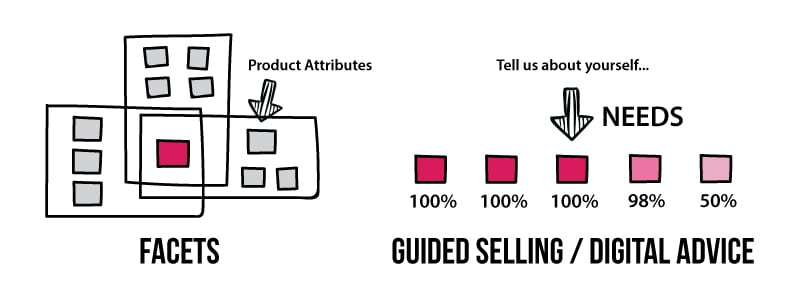
2. Functionality
Exclusion vs Exploration
How Faceted Search Does It
The Faceted search method is based on the concept of exclusion.
There are pre-defined categories that the customer is expected to use to narrow a list of products. The problem is that the classification is often too technical to be useful, causing frustration for domain novices.
If a customer is looking for a camera, he/she might not know what number of megapixels will do. Moreover, several faceted search implementations give users the option to narrow their search by selecting specific values such as 20 and 30 megapixels. Cameras that take photographs at 19 or 31 megapixels won’t show up, even if these might be better options for this customer.
How Guided Selling Does It
As opposed to facets, Guided Selling doesn’t confront customers with technical attributes and abstract features, but instead follows a needs-oriented paradigm that facilitates exploration and inspiration.
It asks a series of relatable, easy-to-answer questions that help find out the customer’s intentions and expected product usage. This way, even customers who may not have a clear understanding of the products they need are able to quickly narrow down to products that are most useful and relevant to them.
What kind of pictures do you take more often; Outdoor or indoor? Landscapes or portraits? What will you be shooting? And so on and so forth. Answers to these questions are far more simple and specific, resulting in a better experience and better results.
3. Flexibility
One-size fits all vs Personalization
How Faceted Search Does It
If there’s one thing all businesses know, it’s that there’s no such thing as a one-size-fits-all approach. And yet, there’s no space for personalization in faceted search. Every single visitor is presented with the same options, the same categories, and the same specifications to choose from.
How Guided Selling Does It
Guided Selling adapts to different shoppers by dynamically changing questions based on previous responses.
Sophisticated digital advisors and Guided Selling solutions are able to understand the context to only display follow-up questions that are relevant to the current user. These solutions adapt to the customer’s individual needs and personalize the experience every time. Moreover, they can consider information about known preferences in the process, such as from user profiles, to personalize the experience even further.
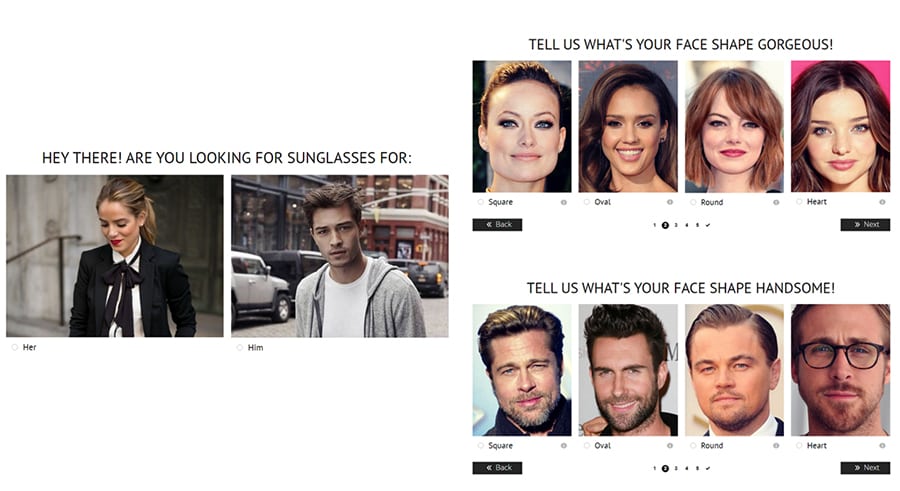
4. Experience
Rational vs Emotional
How Faceted Search Does It
The basis for facets is purely rational and technical. A consumer’s mind, however, doesn’t always work like that. Customers are willing to give up one specification in exchange for another benefit. With most facets, however, a customer would have to deselect previous options to reactivate options they may be interested in. They are often not able to freely combine facets.
For example, if a customer sets a price filter to limit laptops to $1,000 or less, they may not be able to select the Apple brand filter option unless they went back to adjust the price range. This can present a major disruption of the user’s exploration process and lead to a frustrating experience.
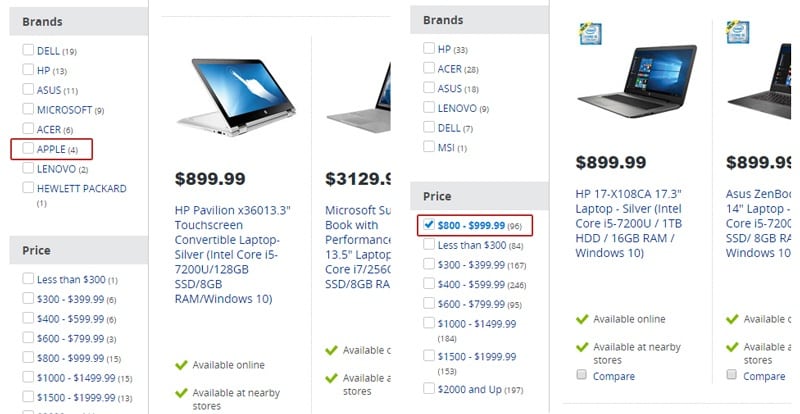
How Guided Selling Does it
Guided Selling allows customers to inform the digital advisor of all of the qualities they are looking for in a product in one go. These qualities are inherently emotional as they are based on the user’s needs and expectations. Like a sales attendant, Guided Selling solutions listen to the customer first and allow them to specify their needs without interruptions, creating a more fluid experience.
5. Results
No Match Found vs Alternative Matches
How Faceted Search Does It
Facets can sometimes turn up zero results if products don’t meet every single category and subcategory as defined by the consumer. There’s nothing more off-putting to a shopper than seeing “no match found” on the screen.
How Guided Selling Does It
That dreaded “no match found” result doesn’t get pulled up by a product advisor. Intelligent digital advisors are tolerant and able to compute close alternatives whenever there is no exact match.
6. Value Communication
Features vs Benefits
How Faceted Search Does It
There is little to no value communication in faceted search. One may be asked to choose between HD, 3D, and 4K without necessarily knowing what the difference is. Facets do not provide customers with support to understand exactly what they are going to get; it depends on the assumption that they are already familiar with the jargon.
How Guided Selling Does It
Telling a customer that this mattress adjusts to your spine’s curve, keeping your back healthy while you sleep is more effective than saying, “This mattress has double-padded memory foam.”
Customers don’t care about a product’s technical features so much as the benefits that these features have. Guided Selling applications take this into account by educating users throughout the process.
For example, an interactive TV advisor may ask the customer if they place more importance on a crisp picture quality or richer colors or a better sound or how many people would watch TV with them. The customer can immediately see how benefits translate into product features and vice-versa – either through contextual information texts or the suggested products that are listed as a result of their answers.

It can explain how exactly a recommended product fits the customer’s needs, which in turn educates buyers, increases decision confidence and effectively eliminates buyer’s remorse as well as product returns. Once a customer understands the specific benefits of a product’s technical features, they are also more willing to pay a higher price for a better product. This opens up more cross-sell and upsell opportunities.

7. Setup and Design
Complexity vs Simplification
How Faceted Search Does It
Successfully implementing faceted search poses a complex design challenge and is often difficult to do correctly. Should the selection be disjunctive (OR) or conjunctive (AND), how many and which facets should be displayed?
Selecting the right labels that are meaningful and easily understood by the majority of users can be tricky too.
The wrong setup can quickly lead to information overload and a hampering of the decision-making process.
Some products may have a few relevant facets like size, color, and brand while others may have up to 18 different combinations. All of these selections can take up too much valuable space on the screen and increase complexity in the decision-making process.
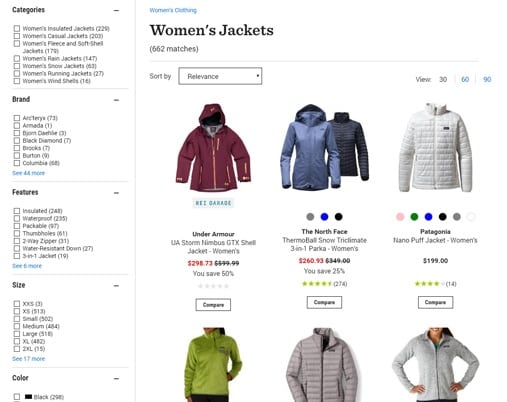
How Guided Selling Does It
Interactive product advisors aim to simplify decision-making by guiding shoppers through their product selection in a step-by-step process, similar to a journey. These systems can include multimedia content such as audio and video or textual explanations that keep users engaged by educating them and explaining how certain answers will impact the result – without increasing complexity.
Digital product advisors just require answering questions. Short, targeted, need-based questions are easier to set up and navigate without impacting usability or clogging up valuable real estate. As users are not presented with all questions at once, the chance of overwhelming them is significantly reduced.
8. UX
Desktop vs Omnichannel
How Faceted Search Does It
The worst nightmare of faceted search is mobile incompatibility.
While facets may work well on desktops, most implementations provide a lackluster mobile experience.

How Guided Selling Does It
Given their modular nature, digital product advisors boast seamless mobile compatibility.
The interfaces can be implemented in a responsive way to ensure aesthetically pleasing and usable design across devices. Some implementations offer additional omnichannel capabilities that allow customers to switch between devices and pick up where they left off, send results by email, or share them with friends.
Conclusion
While the faceted search was a breakthrough in the field of information classification, Guided Selling is the clear next step in product discovery. It delivers all of the conveniences of faceted search, but on a platform that is more engaging, intuitive, and effective.
Online sellers must understand that changes in consumer behavior aren’t subtle anymore. High-speed internet, modern technology, and ever-growing use of mobile have made consumers expect nothing less than spectacular service. Shopping should happen quickly and seamlessly. They want a website that can quite literally read their mind and surprise them with relevant results in a matter of seconds. Guided Selling does exactly that for your website, making yours the business of choice.

